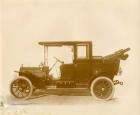|
FUEL & EXHAUST: Stalling or Hard Starting When Hot (Vapor Lock)
|
||||
|---|---|---|---|---|
|
Forum Ambassador

|
When evaluating complaints of hard starting when hot, it only makes sense to first consider electrical causes. In particular, ignition condensors and coils on the verge of failure may begin to malfunction only when hot.
Yet, stalling in hot weather, as well as hard starting after a hot shutdown could be the result of a problem with fuel vaporization - even if the fuel lines are free of leaks and the fuel pump is in good working order. This condition can manifest itself in a couple of different ways. First, vapor lock occurs when fuel in the lines turns from liquid to gaseous state. Diaphragm-type pumps can move fuel because liquids aren't compressible. However, vaporized fuel IS compressible. In the event of vapor lock, the pump can't move fuel, and the engine is starved, and stalls. Let things cool off, and the engine will run again. Second, fuel percolation - also known as "fuel foaming" in more recent decades - occurs for similar reasons, but happens in the carburetor. The hot fuel literally begins to boil in the carburetor bowl, and the resulting foam pushes up through the bowl vents and runs down the throat of the carburetor and into the intake. The engine then acts like it is loading up or flooded. This typically happens after a hot shutdown, as engine temperature actually rises for a brief period because the coolant is no longer circulating, and the resulting condition is also known as a "hot soak". All this is really nothing new - vehicle manufacturers have been wrestling with these complaints for decades. Check this site's online Service Index and you'll find the several reference to "vapor lock" - even as far back as the 1930s. Initially, the root of the problem was winter grades of gasoline, which had a higher vaporization point for easier cold weather starting. The beneficial characteristic of that blend actually becomes a detriment if winter fuel is still in the supply chain when warm weather arrives. Yet, excessive engine operating temperatures can affect even a summer blend. Although the manifold heat control valve had been introduced to improve performance when the engine is cold, a malfunction of that valve can actually contribute to vaporization problems. Vehicle manufacturers took a variety of effective actions over the years, and things seemed to be under control. It wasn't long after the Arab oil embargo of the 1970s that alcohol became a year-round component of motor fuel. However, engines were now operating at higher temperatures, and as new vehicles were downsized and engine bays became smaller, some age-old problems began to rear their ugly head. During the 1980s, many carbureted vehicles were retrofitted with factory-approved, in-tank, electric pumps to raise the vaporization point of fuel (analogous to pressurizing engine cooling systems) and a regulator near the carburetor bowl inlet (to drop line pressure, thus preventing float needles from being pushed off their seats). Complaints of vapor lock and fuel foaming were further eliminated as high-pressure EFI systems replaced carburetors and diaphragm-type pumps in new vehicle. Yet, as oil prices have risen dramatically in recent years, modern gasoline blends now contain even higher levels of alcohol, which further raises the vaporization point - making things worse, all-around, for our old carbureted vehicles. There have been numerous reports of stalling and hard starting problems in this and other forums that can be attributed to fuel, and many helpful members have offered good advice and effective solutions. If the factory installed a shield for the gas tank or fuel pump on your Packard, it was for a damned good reason. Some fuel pumps also used insulators in their mountings. Unfortunately, the less-informed may have discarded this equipment in the course of routine service. Some carburetors came with built-in anti-percolation devices that can be tweaked. Check the factory shop manual, parts book, and service bulletins for your car. With fuel lines and exhaust pipes routed properly and not restricted, all shields and insulators in place, manifold heat valve operating properly, ignition correctly timed, and engine temperature not excessive, another countermeasure for percolation was to insulate the carburetor from the heat of the manifold. Some manufacturers used two or more gaskets to accomplish this. Others installed a sandwich of an insulating material between two gaskets. By the 1970s, cars were using a thick plastic spacer, coated with a sealing material to eliminate the need for gasket. When not installed by or available from the factory, I've recommended a thin piece of phenolic board, trimmed to the same shape and with same holes as the base gasket, installed between two of those gaskets. Those who have followed this approach often report success. When all else fails, several owners have reported relief from vapor lock by adding a modern, external, electric fuel pump inline. This is typically mounted back by the fuel tank, but often with a switch - for use only when needed. Finally, some members in the Packardinfo forums have reported relief by adding a bit of diesel fuel to the gasoline - usually not more than one gallon per thankful. A few members have more specifically recommended a solution of not more than 5% diesel fuel, by volume, but I'm concerned about potential side effects.
Posted on: 2011/10/12 10:43
|
|||
|
||||
|
Re: FUEL & EXHAUST: Stalling or Hard Starting When Hot (Vapor Lock)
|
||||
|---|---|---|---|---|
|
Webmaster
|
**UPDATED 8/29/12**
Posted on: 2012/8/29 12:51
|
|||
|
-BigKev
1954 Packard Clipper Deluxe Touring Sedan -> Registry | Project Blog 1937 Packard 115-C Convertible Coupe -> Registry | Project Blog |
||||
|
||||








